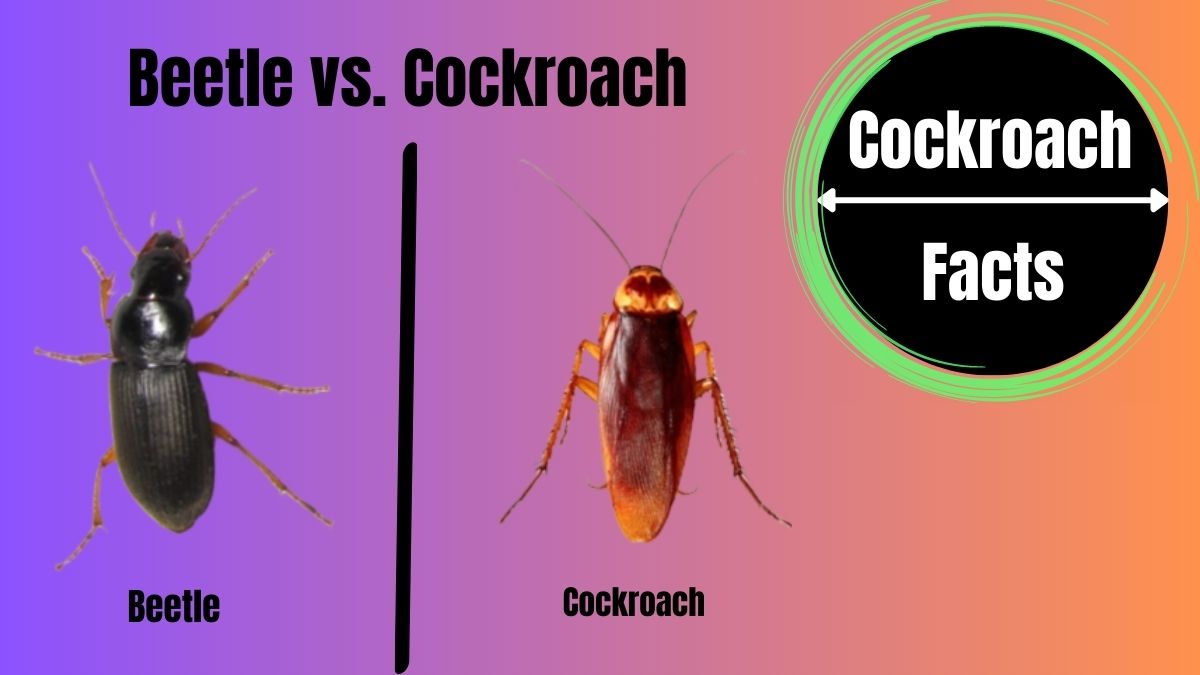Insects such as beetles and cockroaches are commonly encountered in our daily lives, often invoking feelings of discomfort or even disgust. While these two insects may appear similar to the untrained eye, they actually belong to different families and possess distinct characteristics and behaviors.
Anatomy and Physical Characteristics
Beetles are easily recognizable by their hard exoskeletons and distinctive body shapes. They possess elytra, which are hard protective forewings that cover their hindwings. These elytra can vary in color and pattern, showcasing the diversity of beetle species. Additionally, beetles typically have longer and more segmented antennae, aiding them in sensory perception.
Cockroaches, on the other hand, have a flat and oval-shaped body, allowing them to squeeze into tight spaces. Their flexible exoskeletons enable them to maneuver through cracks and crevices. While most cockroaches are brown or black in color, some species exhibit lighter or reddish hues. They have long, thread-like antennae, which they use to detect their surroundings.
Habitat and Distribution
Beetles can be found in a wide range of habitats, including forests, gardens, fields, and even aquatic environments. The diversity of beetle species means that their habitat preferences vary greatly. They can be encountered on every continent except Antarctica, thriving in diverse climates and ecosystems.
Cockroaches prefer warm and humid environments, often making themselves at home in kitchens, bathrooms, basements, and other areas with readily available food and water sources. They have successfully adapted to urban environments and are found worldwide. Some species even display an affinity for human dwellings, taking advantage of our resources.
Behavior and Diet
Beetles are omnivorous insects, feeding on a wide variety of food sources such as plants, fungi, and other insects. Some beetle species play beneficial roles in the ecosystem, as they help control populations of agricultural pests. For example, ladybird beetles, also known as ladybugs, prey on aphids and other detrimental insects, making them valuable allies for farmers and gardeners.
Cockroaches are opportunistic scavengers with an omnivorous diet. They feed on decaying matter, food scraps, and organic materials. Their adaptability allows them to survive on a range of diets, and they have been known to consume substances such as soap, glue, and even book bindings. These resilient creatures are primarily active at night, emerging under the cover of darkness to search for sustenance.
Reproduction and Lifespan
The reproductive processes of beetles and cockroaches follow a similar pattern of complete metamorphosis, consisting of egg, larva, pupa, and adult stages. Female beetles lay their eggs in suitable environments, often near food sources to ensure the survival of their offspring. The lifespan of beetles varies depending on the species, with some living for only a few months and others for several years.
Cockroaches also undergo complete metamorphosis, with females depositing egg cases called oothecae in hidden locations. These egg cases protect the developing embryos until they hatch. The lifespan of cockroaches ranges from a few months to a couple of years, depending on the species and environmental conditions.
Health and Economic Impact
While some beetle species can cause damage to crops and wood structures, the majority do not pose significant threats to human health. In fact, certain beetles, like the ladybird beetle, are considered beneficial due to their ability to prey on agricultural pests, providing natural pest control.
Cockroaches, on the other hand, are widely regarded as pests due to their potential to contaminate food and spread diseases. Their presence in homes and commercial spaces can be a cause for concern. Cockroach allergens have been linked to triggering asthma and other respiratory issues in sensitive individuals, making their eradication crucial for maintaining a healthy living environment. The economic impact of cockroaches is also significant, as their infestations require pest control measures and can result in damage to stored food and materials.
Conclusion
While beetles and cockroaches may share some superficial similarities, they are distinct insect groups with unique characteristics, behaviors, and impacts on the environment and human health. Understanding these differences is key to appreciating the ecological roles of beetles and addressing the challenges posed by cockroach infestations. By learning more about these fascinating creatures, we can foster a better understanding of the diverse world of insects and the important roles they play in our ecosystems.

